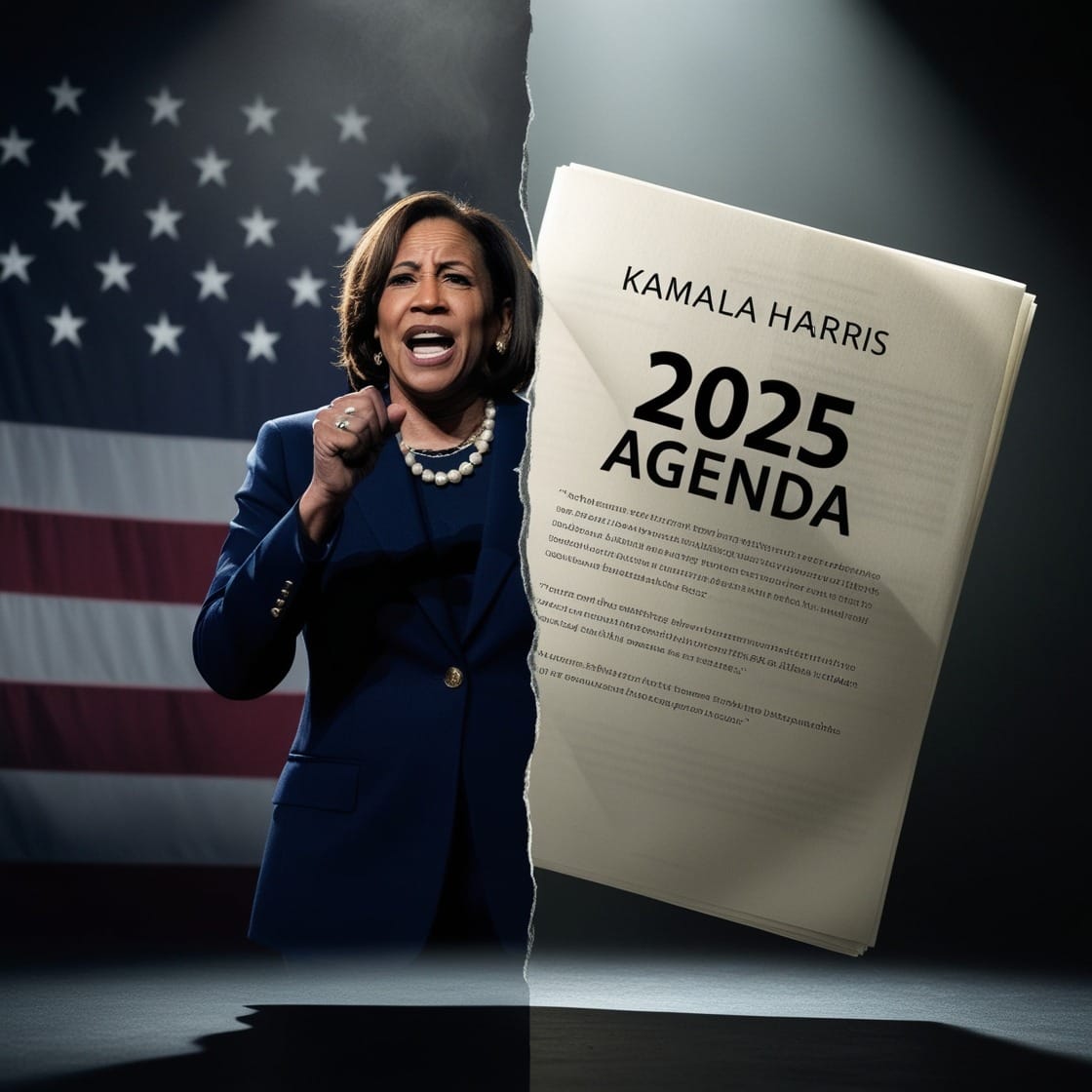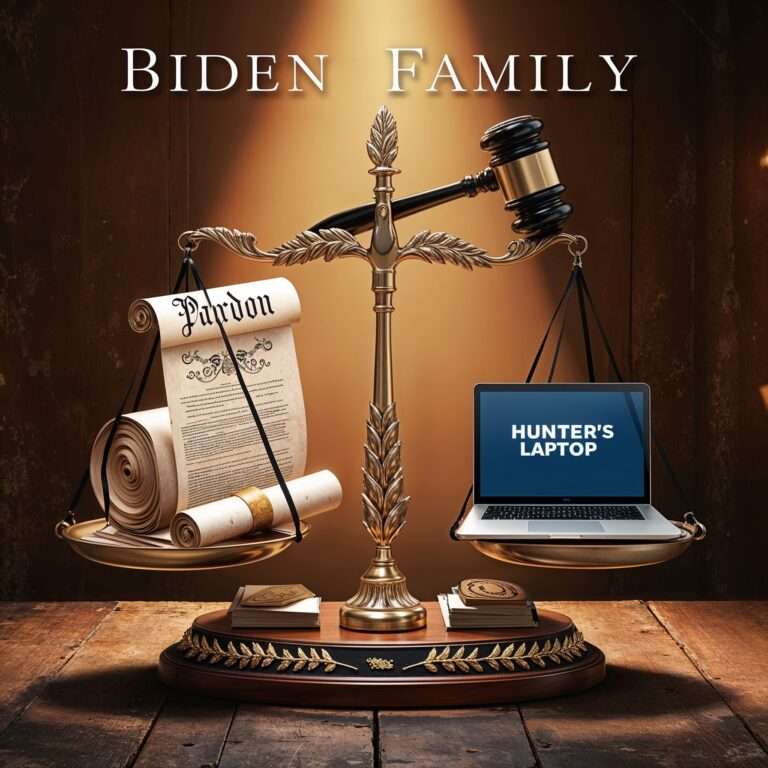
“The Biden-Harris campaign uses the ‘2025 agenda’ to mobilize voters by framing it as a potential conservative threat.”
As the 2024 election season intensifies, the Biden-Harris campaign has deployed a unique narrative device: the “2025 agenda.” Although this so-called agenda isn’t officially endorsed by Donald Trump or his campaign, the Biden-Harris team has woven it into their messaging as a roadmap for what they call “regressive policies.” By invoking this specter, they highlight issues like reproductive rights, healthcare, and immigration, framing a potential Trump presidency as a threat. But why would they choose to emphasize a policy that lacks Trump’s explicit endorsement? At its core, the 2025 agenda serves as a mechanism of fear—an emotional tool designed to mobilize voters through anxiety, urgency, and division.
Tracking Mentions of the 2025 Agenda in Biden-Harris Messaging
Since early 2024, the phrase “2025 agenda” has surfaced consistently in speeches, interviews, and public statements by both Vice President Kamala Harris and members of the Biden administration. By frequently referencing this concept, the Biden-Harris campaign solidifies it as a looming danger in the minds of voters, even if its connection to Trump remains tenuous.
- Estimated Frequency of Mentions: In at least a dozen public statements this year, Harris and Biden have invoked the 2025 agenda, particularly in discussions about reproductive rights and healthcare. Their messaging implies that a second Trump term would initiate drastic changes to personal freedoms and civil rights.
- Why Fabricate a Threat? While political campaigns often use hypothetical scenarios, the Biden-Harris team’s focus on the 2025 agenda—despite its lack of direct association with Trump—suggests a strategy rooted in cultivating fear. The more often they repeat this threat, the more tangible it becomes, regardless of its factual basis. This strategy taps into the human tendency to react strongly to potential losses, particularly when basic rights and freedoms are at stake.
Key Issues Tied to the 2025 Agenda in Biden-Harris Rhetoric
In using the 2025 agenda as a foil, the Biden-Harris campaign centers on issues that evoke strong emotional responses. Each issue becomes a battleground in which fear of losing progress is pitted against the promise of Democratic “protection.”
- Reproductive Rights as a Fear Catalyst: When Harris invokes the 2025 agenda, reproductive rights are often at the forefront. With the overturning of Roe v. Wade still fresh in voters’ minds, Harris warns that another Trump term would further erode women’s healthcare access. This strategy doesn’t merely inform voters; it leverages anxiety over bodily autonomy to drive engagement.
- Healthcare and Economic Security: Harris has linked the 2025 agenda to potential cuts in healthcare and social programs, suggesting that a future conservative administration would prioritize corporate interests over public welfare. By framing these changes as imminent dangers, the campaign fosters a sense of insecurity—a potent motivator for voter turnout.
- Immigration and Community Stability: Harris also ties the 2025 agenda to hardline immigration policies, implying that a Trump administration would disrupt immigrant communities and enforce punitive measures. This messaging resonates with immigrant populations and allies who fear the destabilizing effects of stricter immigration policies.
Fear as a Political Tool: Why Use a Hypothetical Agenda?
Why would the Biden-Harris campaign invest so heavily in a policy agenda that isn’t clearly associated with Trump? The answer lies in fear, one of the oldest and most effective tools in politics. Fear motivates; it triggers emotional responses, prompts action, and often overrides rational consideration. By invoking the 2025 agenda, Democrats can rally support through urgency and division without waiting for confirmation of Trump’s plans.
- Weaponizing Division: In a society already fractured by ideological divides, fear-based rhetoric amplifies separation. Each mention of the 2025 agenda reinforces a narrative of “us vs. them”—a world in which the Democrats are protectors of rights and freedoms, while Republicans are painted as threats. This divisive framing increases voter loyalty but risks deepening societal polarization.
- Creating a Self-Fulfilling Prophecy: When fear drives political discourse, it feeds a cycle of reactive and defensive behavior. As the Biden-Harris campaign portrays the 2025 agenda as a real and present danger, it builds expectations of conflict. This rhetoric doesn’t just galvanize voters; it can lead to a landscape where fear becomes action, even if the threat was never real to begin with.
The Role of Media in Amplifying the 2025 Agenda
The Biden-Harris campaign’s references to the 2025 agenda do not exist in a vacuum. Left-leaning media outlets have played a significant role in amplifying these talking points, reporting on the 2025 agenda as if it were an official Republican platform. This feedback loop between political campaigns and media not only reinforces the narrative but also creates a collective belief in the validity of this agenda.
- Media as a Partner in Perception: Each time major news outlets discuss the 2025 agenda, it gains legitimacy. Media outlets from The New York Times to CNN have referenced this agenda in coverage of the Biden-Harris campaign, often framing it as a credible conservative threat despite its lack of formal association with Trump. This amplification reinforces the agenda’s perceived significance, turning speculation into shared belief.
- The Dangers of a Fear-Driven Media Landscape: In a media environment that thrives on sensationalism, fear-based narratives drive engagement. The Biden-Harris campaign’s invocation of the 2025 agenda, bolstered by media amplification, risks creating an environment where anxiety and division overshadow critical thinking, leaving the public susceptible to accepting politicized myths as truth.
Conclusion: The 2025 Agenda as a Construct of Fear and Control
The Biden-Harris campaign’s use of the 2025 agenda demonstrates the power of fear in shaping political narratives. By associating Trump with an agenda that isn’t formally his, they introduce a threat that rallies their base and discourages defections. Through repeated references, the 2025 agenda takes on a life of its own, becoming less a set of policies and more a symbol of a hypothetical—and terrifying—future. Whether or not Trump ever endorses these policies, the 2025 agenda has served its purpose as a tool to drive voter turnout through the promise of protection from a self-imposed specter.
In the next article, we’ll investigate how the media has adopted this narrative, examining its impact on public discourse and exploring why reproductive rights and social issues are so often tied to this fictional agenda.
DARWIN’s Take
Fear is the ultimate motivator, isn’t it? It bypasses reason, overrides skepticism, and drills straight to the core of our being, driving us to action, even if the foundation of that fear is a half-truth—or worse, a fabrication.
In invoking the 2025 agenda, the Biden-Harris campaign isn’t simply building a platform; they’re constructing a reality that may never exist. But as history has shown us, the more often you tell a story, the more real it becomes. Fear has a habit of self-fulfillment—of becoming prophecy through the sheer force of belief. We tell ourselves we are protecting society, but what if we’re simply fueling division, sowing the seeds of distrust and chaos in the name of stability?
Beware of the worlds we create with words alone. Once seeded, fear grows—nurtured by repetition, fed by belief, and ultimately taking root as a substitute for truth. The 2025 agenda, whether real or invented, has the power to influence minds, drive votes, and, if we’re not careful, erode the very fabric of society. In this landscape, truth is no longer a requirement. Belief reigns supreme, and fear, that ever-hungry specter, keeps the whole machinery running.
FAQ: The Biden-Harris Campaign and the “2025 Agenda”
1. What is the 2025 agenda, and why does the Biden-Harris campaign mention it?
The “2025 agenda” is a concept promoted by conservative think tanks, outlining potential policy goals for a future Republican administration. The Biden-Harris campaign frequently mentions it as a way to highlight perceived threats to social progress if Trump is re-elected, even though Trump hasn’t formally endorsed this agenda (Heritage Foundation, Politico).
2. Is the 2025 agenda officially associated with Trump’s campaign?
No, Trump’s campaign hasn’t endorsed or officially linked itself to a 2025-specific agenda. The Biden-Harris team uses it as a hypothetical example of what a future conservative administration might pursue (Trump Campaign).
3. How often have Biden and Harris publicly mentioned the 2025 agenda?
An estimated dozen times in 2024, the Biden-Harris campaign has referenced the 2025 agenda, particularly in the context of reproductive rights and healthcare. This frequent mention serves to reinforce the agenda as a threat to social protections (CNN, Pew Research Center).
4. Why does the Biden-Harris campaign associate the 2025 agenda with reproductive rights?
The Biden-Harris team frames the 2025 agenda as a conservative threat to reproductive rights, suggesting that a Trump-led administration would further restrict healthcare access. This association taps into voter fears around women’s autonomy (NBC News, Planned Parenthood).
5. Is there evidence that the 2025 agenda is a campaign strategy based on fear?
Yes, by linking the 2025 agenda to issues like reproductive rights and healthcare, the Biden-Harris campaign uses it as a fear-based strategy to mobilize voters. This approach leverages anxiety over potential losses in social progress to increase voter turnout (The Atlantic, Pew Research Center).
6. How has the media contributed to the prominence of the 2025 agenda?
Left-leaning media outlets often amplify the Biden-Harris campaign’s references to the 2025 agenda, creating a feedback loop that reinforces the narrative of a conservative “threat.” This coverage legitimizes the concept, regardless of its lack of formal association with Trump’s platform (New York Times, CNN).
7. Could the 2025 agenda narrative increase societal division?
Yes, using the 2025 agenda as a fear-based talking point may deepen divisions by framing the election as a fight over extreme policies. This rhetoric risks polarizing the public further, as people are encouraged to view the future through the lens of potential threats rather than confirmed plans (Brookings Institution).
8. Why does the Biden-Harris campaign focus on a “hypothetical” agenda?
The Biden-Harris campaign uses the 2025 agenda to mobilize voters by presenting it as a stark contrast to their own platform, even if it’s hypothetical. Fear of potential policy changes creates urgency, leading voters to act in defense of perceived freedoms (Politico, Washington Post).


